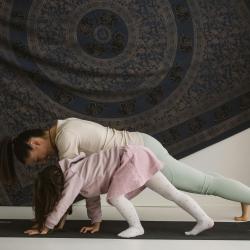Mindfulness for Beginners: A Step-by-Step Guide
Finding a moment of peace can be challenging. For many, the practice of mindfulness offers a sanctuary—a way to connect with the present moment and find a stillness that can often seem elusive. If you’re new to mindfulness, this guide will serve as a step-by-step introduction to this deeply rewarding practice.
What is Mindfulness?
At its core, mindfulness is the practice of being present in the moment, fully engaged with anything you are doing without judgment or distraction. It involves observing your thoughts, emotions, and sensations without becoming overwhelmed by them. Rooted in Buddhist meditation traditions, mindfulness has gained popularity worldwide as a transformative tool to combat stress, enhance well-being, and improve mental clarity.
The Benefits of Mindfulness
Mindfulness isn’t just a buzzword; it's backed by a growing body of scientific research. Some proven benefits include:
- Reduced Stress: Mindfulness can lower cortisol levels and has been shown to significantly reduce stress.
- Improved Focus: Regular practice enhances concentration and the ability to focus on tasks.
- Emotional Regulation: It helps in recognizing and managing emotions, leading to improved relationships and emotional health.
- Better Sleep: Mindfulness can ease the body's transition to rest, improving the quality of sleep.
A Step-by-Step Guide to Start Mindfulness
Step 1: Set Your Intention
Before you begin, ask yourself why you want to practice mindfulness. Whether it’s to reduce anxiety, enhance self-awareness, or simply find peace, having a clear intention will guide your practice.
Step 2: Pick a Designated Time
Consistency is key to mindfulness practice. Whether it's first thing in the morning, during your lunch break, or right before bed, choose a time that you can consistently dedicate to your practice. Start with just five minutes a day and gradually increase the duration.
Step 3: Find a Quiet Space
Select a quiet and comfortable place where you won’t be disturbed. This could be a room in your house, a corner in a park, or any place where you feel calm and at ease.
Step 4: Start with the Breath
Begin your practice by focusing on your breath. Sit in a comfortable position with your spine straight, close your eyes, and take deep, slow breaths. Pay attention to the rise and fall of your chest. Notice how the air feels as it enters and leaves your body.
Step 5: Observe Without Judgment
As thoughts inevitably arise, acknowledge them without getting involved or passing judgment. Imagine your thoughts as clouds passing in the sky—observe them, let them pass, and gently return your focus to your breath.
Step 6: Incorporate Body Scans
A body scan is a mindfulness exercise that involves directing attention to different parts of the body. Start from the top of your head and gradually move down to your toes, noticing any sensations or tension. This practice fosters a deeper connection with your body and helps in releasing stress.
Step 7: Practice Gratitude
Cultivate a sense of gratitude during your mindfulness sessions. Reflect on things you appreciate in your life, fostering a positive outlook and an appreciation for the present moment.
Step 8: Extend Mindfulness to Daily Activities
Beyond formal meditation, practice mindfulness in your daily activities. Whether you're eating, walking, or washing dishes, engage fully with the task at hand, noticing every detail and sensation.
Overcoming Common Challenges
Like any new habit, practicing mindfulness can come with challenges. Beginners may find it difficult to silence the noise in their minds or set aside dedicated time. Be patient with yourself and remember that mindfulness is a journey, not a destination. Don’t worry about achieving the "perfect" mindful state; instead, focus on the practice and growth over time.
Final Thoughts
Embarking on a mindfulness journey can profoundly impact your life, offering a pathway to greater awareness, peace, and fulfillment. As you incorporate mindfulness into your daily routine, you'll begin to notice subtle shifts in your perspective and attitude towards life. Remember, mindfulness is a skill that gets easier—and more rewarding—with practice. Start today, and discover the profound effects of being truly present.






















